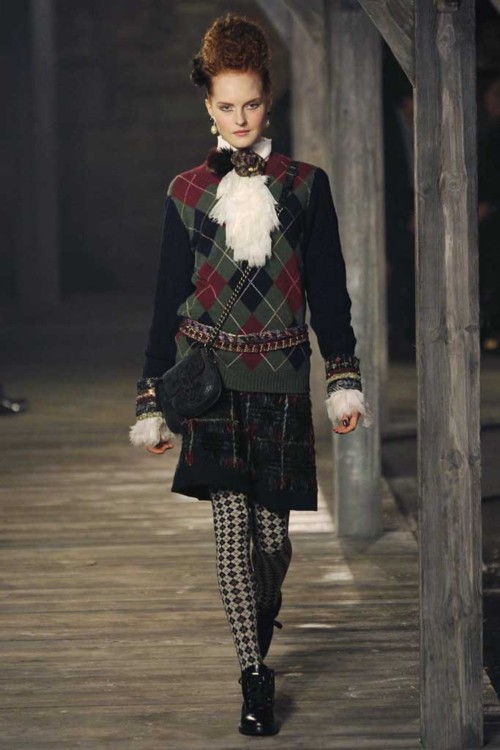Earlier in the summer I posted about a great find I made, an early 1960s Davidow jacket that was clearly Chanel-inspired. Unfortunately, there was no matching skirt, so instead of buying this jacket for my collection, I bought it to actually wear.
On the negative side was the condition of the lining. As you can see, there were major issues in the underarm area. I decided that the best thing to do was to send the piece off to the dry cleaners and then replace the lining. The problem then became one of finding a nice silk fabric that would go with the tweed. It’s times like this that I really miss Waechter’s. I did try the remaining fabric store in the area that carries luxury fabrics, House of Fabrics, but they did not have a suitable match.
The tweed is so wonderful. It really looks a lot like the tweeds that Bonnie Cashin used in her beautiful coats. But the two shades of blue were proving to be a color challenge. Then while sorting through some damaged scarves, I happened on a nice old Vera polka dot. It was not large enough for the entire job, but I also had an oblong scarf in ombre blues that could be used for the sleeves.
This is the point where I make the cutting up old stuff disclaimer. If you are a vintage clothing shopper then you are well aware that much of what is on the market is not in its original form. If someone were to run across my bell bottoms from 1973 they would wonder why would anyone mutilate a pair of pants like that. Well, I cut them off because I am very short. I also chopped off my skirts and dresses. My cutting was part of the history of the garments, but it would tend to make them less attractive to a collector today.
Unfortunately there are sellers who are still cutting old clothing up in order to make it marketable to a certain market. I’m not saying that it is always a bad idea to cut up old clothing; I’m saying it needs to be done thoughtfully, keeping in mind several factors. You would like to think that anyone would know not to cut into a Charles James, but not everyone who loves old stuff is concerned with designer names. My big fear in condoning “up-cycling” is that important pieces are being lost. Condition also plays a role, but even a very damaged Charles James is a valuable treasure.
The truth is that most clothing does not end its life as it began it. I can be very much against remodeling vintage clothes, but then I do have to fact the fact that the mere act of wearing a garment shortens its life. It is possible to love a garment to death, as you probably know from experience.
So what if you have a common item that is damaged, like my Vera scarf? I feel I can cut into it with a clear conscience. (Be aware that while Vera scarves were made by the thousands, some designs are quite rare and valuable. Research before cutting.) The jacket, while lovely and very wearable, is less collectible minus the skirt. I’ll be wearing it, hopefully for a very long time. It is quite possible that I will love it to death.
I carefully removed the old lining and removed the seams so I could use the pieces as a pattern. The sleeve is made from two pieces, and I had just enough silk to make the pieces. I attached them by hand, using the fringe of the scarf at the cuff.
When that was finished I cut out the bodice, using the border of the Vera scarf as part of the design. Here you can see that there was no underlining in the jacket. The seams were in good condition. I attached each piece to the jacket separately.
Because there was a pattern to the dotted design, I cut the back from the very middle of the scarf so that the density design would be retained. The last pieces that I attached were the sides of the bodice.
When doing something like this, lots of basting is essential. The silk is slippery, and the more control you have, the better.

The last step, one that I’m still working on, is the quilting. I decided to let the dots determine the quilting design. I’m not going to quilt every dot. I’m already seeing spots in front of my eyes from working with it.
I’ll be changing the buttons as well. I thought I’d found the perfect buttons, some that I’d salvaged from a destroyed sweater, but they are not the quality I was wanting, so they will probably be temporary until I can locate exactly what I need.












